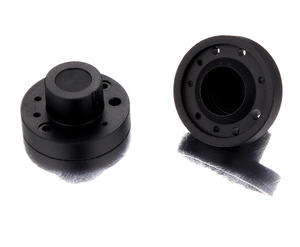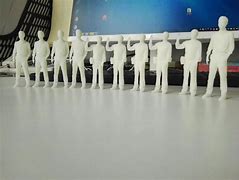**The No-Go List: Materials That Defy 3D Printing Magic**
(What Materials Cannot Be 3d Printed)
3D printing feels like a superpower. Need a phone case? Print it. Lost a chess piece? No problem. But even wizards have limits. Some materials just laugh at 3D printers. Let’s talk about the stuff that refuses to play nice with this tech.
First up: wood. Real wood, the kind that comes from trees. You can’t shove a log into a printer and get a chair. 3D printers use plastics, resins, or metals. Wood’s organic, full of fibers and sap. Printing with it sounds cool, but most “wood” prints are just plastic mixed with sawdust. They look woody but feel like a sad craft project.
Then there’s pure metal. Wait—don’t some printers use metal? Sure, but they’re pricey industrial machines. Your average desktop printer can’t handle molten steel. Metals need extreme heat to melt, way beyond what hobbyist gear offers. Even specialized printers struggle with metals like titanium. They require lasers or electron beams, not exactly garage-friendly tools.
Human tissue? Yep, scientists are trying to print organs. But we’re not there yet. Bio-printing uses living cells suspended in gel, not chunks of heart or liver. The body’s too complex. Cells need oxygen, nutrients, and precise structures. Today’s “printed organs” are simple tissues, not the real deal.
Some plastics also make the no-go list. Take PVC. It’s everywhere—pipes, cables, shower curtains. But heat PVC, and it releases nasty chlorine gas. Printers melt plastic, so PVC is off the menu. ABS and PLA are safe, but try printing a PVC part, and you’ll gas your workspace.
Glass is another troublemaker. It melts at super high temps, then cools into fragile shapes. Printing glass needs precise control. A few labs pull it off using powdered glass and lasers, but your home printer? Forget it. Even professionals end up with cracked or cloudy results.
Food printing sounds fun. Pancakes, chocolate, pizza—cool, right? But most food printers just squirt pre-made dough or melted chocolate. They assemble, not cook. Raw meat? Bacteria risk. Bread? Dough rises unpredictably. 3D printers aren’t kitchen gadgets. They’re picky eaters.
Ceramics? Some printers handle clay, but firing it in a kiln causes shrinkage and warping. Printed ceramic mugs might look cool pre-kiln, but post-firing? Lopsided handles, cracks, leaks. Traditional pottery still wins.
Fabrics? Nope. Printers build layer by layer. Fabric needs weaving, stretching, flexibility. You can’t print a cotton shirt that bends and breathes. Some try printing rigid structures coated in fabric, but it’s not the same as soft, sewn cloth.
Even some chemicals are tricky. Printers can’t mix dangerous acids or explosives. Safety first. Labs avoid printing anything that could blow up or eat through the machine.
(What Materials Cannot Be 3d Printed)
So yes, 3D printing’s amazing. But it’s not magic. Some materials fight the process. Wood stays rooted in nature. Metals demand industrial firepower. Organs remain biology’s secret. For now, printers stick to plastics, resins, and simpler stuff. The rest? They’re waiting for science to catch up.
Inquiry us
if you want to want to know more, please feel free to contact us. (nanotrun@yahoo.com)

